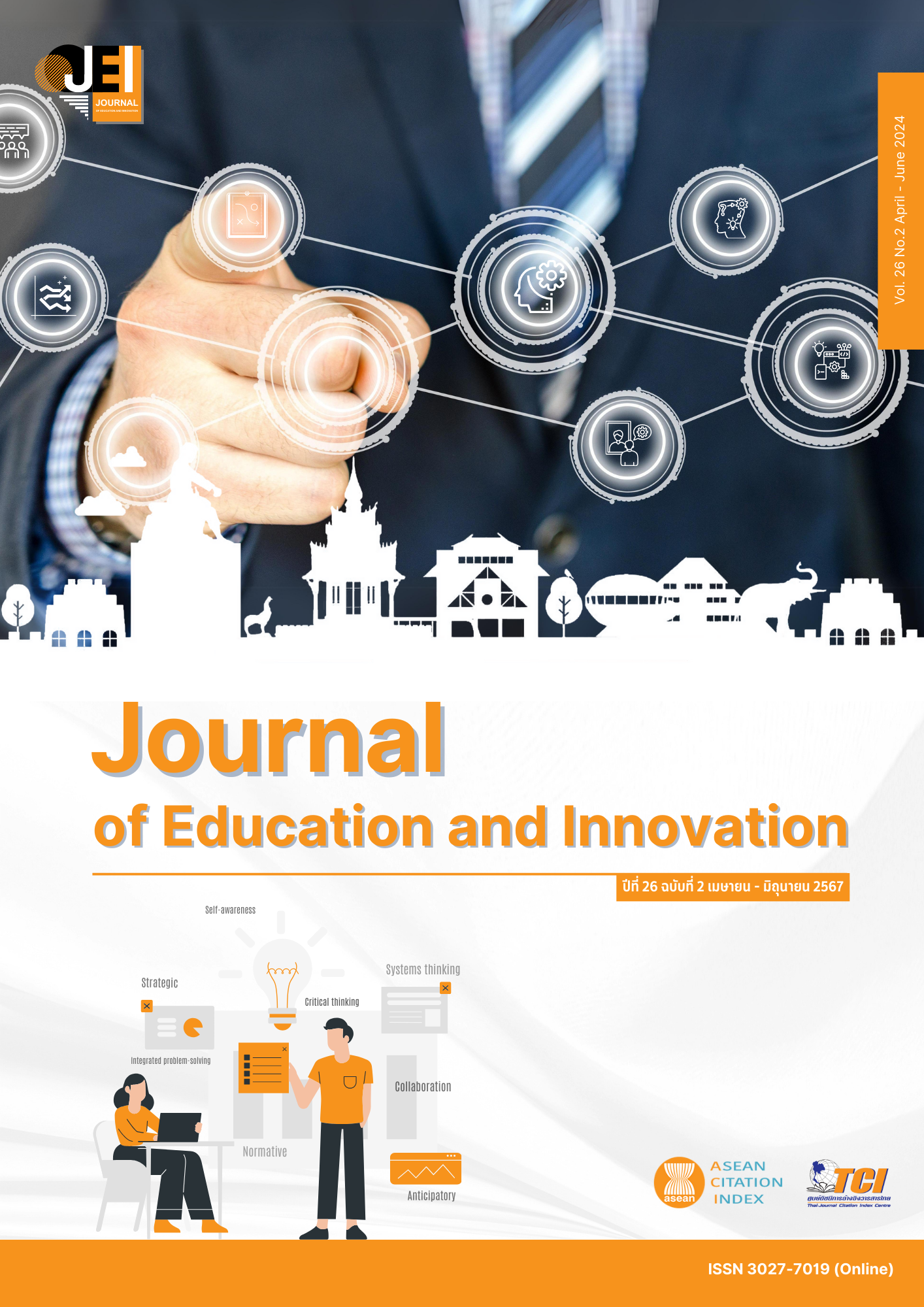THE SCENARIO OF CURRICULUM THAI CLASSICAL DANCE EDUCATION OF THAILAND
Main Article Content
Abstract
The purpose of this research article was to analyze the future prospects of the Thai fine arts curriculum in the next 10 years (B.E. 2565–2575). A futures research approach was employed, utilizing the EFR technique. Data was collected through document analysis and semi-structured interviews conducted with various sample groups, including 1 ministry-level executive, 13 deans and directors, 13 fine arts education professors, 13 students enrolled in the fine arts curriculum, 13 alumni, and 4 graduate users. The research findings indicate that the educational components in each aspect have the following landscape: 1) In the teaching aspect, there was readiness in terms of qualified personnel who had graduated in the relevant field and received continuous support for capacity development. However, the teaching workforce may be constrained by a declining trend in student enrollment. Teachers may became part of the driving force in university economic development, where research missions could become a primary workload burden. In the student aspect, future students were expected to possess high learning skills due to growing up in the era of technology and rapidity and exhibiting bold thinking and expression. However, it was found that the newer generation of children showed decreased interest in Thai fine arts subjects. 3) In terms of content, it underwent changes according to the era, and technology played a significant role in driving learning. 4) Regarding the context, higher education institutions might face economic conditions that impact the overall curriculum, including the fine arts curriculum. Additionally, policies from the ministry could be another interesting factor in the future development of the Fine Arts curriculum, such as the implementation of a sandbox curriculum approach.
Article Details

This work is licensed under a Creative Commons Attribution-NonCommercial-NoDerivatives 4.0 International License.
The owner of the article does not copy or violate any of its copyright. If any copyright infringement occurs or prosecution, in any case, the Editorial Board is not involved in all the rights to the owner of the article to be performed.
References
Amatayakul, P. (1986). Appreciation music (2nd ed.). Bangkok: Siam Samai.
Chantavanich, S. (2018). Qualitative research (24th ed.). Bangkok: Chulalongkorn University Printing House.
Colim, J, Marsh. (2009). Key concept for understanding curriculum (4th ed.). Publisher: Routledge.
Dator, J. (2005). Universities without quality and quality without universities. On the Horizon, 13(4), 119-148.
Kachinthorn, U. (2020). University adaptation to respond to the disruption era. Professor Chatchawan Osathanon Honorary speech, 51st Anniversary of the Royal Bestowal of Mahidol University’s Name and 132st Anniversary of Mahidol University. Nakhon Pathom: Mahidol University
Mokkaranurak, D. (2011). The Scenario of vocational education in Thailand during the next decade (2011-2021) (Doctor dissertation). Khon Kaen: Khon Kaen University.
Ministry of Education. (2008). Indicator and core learning material, Arts Department the Basic Education Core Curriculum B.E. 2551 (A.D. 2008). Bangkok: Office of the Basic Education Commission.
Sabpasri, P., Saibunmi, S., & Chuppunnarat, Y. (2019). Enhancing elderly’s well–being by using Lanna music activities: A case study of the elderly folk music club, San Khong Luang Community, Chiangrai Province. Saint John’s Journal, 23(33), 224-239.
Suttachitt, N. (2012). Music education: Principles and materiality. Bangkok: Chulalongkorn University Printing House.


